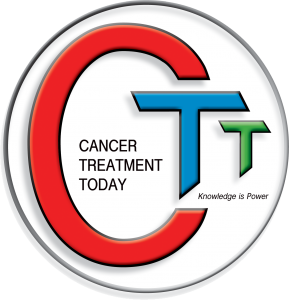Venclexta for AML and ALL and in combination – pro
The FDA breakthrough designation was granted for treatment naive patients with AML who are not eligible for standard high dose induction.
There are recent report of the use of Venclexta patients whose acute myelogenous leukemia (AML) had relapsed or was resistant to chemotherapy and those who were deemed unable to tolerate chemotherapy experienced responses to the selective BCL-2 inhibitor venetoclax (Venclexta), with complete remissions in some, according to phase II clinical trial data published in Cancer Discovery. In it, 32 patients with AML with a median age of 71 years to this multicenter, single-arm trial evaluating 800 mg daily oral venetoclax. Twenty-six patients received at least four weeks of therapy.
The overall response rate was 19 percent; two patients had complete response (CR) and four had complete response with incomplete blood count recovery (CRi). The median duration of therapy in responders was 144.5 days, and the median duration of CR was 48 days. All patients discontinued therapy due to progressive disease or an adverse event, or for other reasons.
The investigators performed cytogenetic analysis, BH3 profiling, and next-generation sequencing to look for AML-related genetic mutations in the patients’ samples collected at study entry and found that 12 patients had mutations in IDH genes, and six had a high BCL-2-sensitive protein index.
Venetoclax has received an FDA breakthrough therapy designation for use in combination with hypomethylating agents in treatment-naïve patients with acute myeloid leukemia (AML) who are not eligible for standard high-dose induction treatment, according to AbbVie, which is codeveloping the BCL-2 inhibitor with Genentech. The designation is based on data from a small early-stage trial in which over 70% of untreated patients with AML had clinical responses to combination venetoclax therapy.
The most recent phase I/I paper by Nichaolar SHort et al., concluded: ” The combination of azacitidine, venetoclax, and gilteritinib resulted in high rates of CR/CRi, deep FLT3 molecular responses, and encouraging survival in newly diagnosed FLT3-mutated AML. Myelosuppression was manageable with mitigative dosing strategies.”.
As such, there is sufficient evidence to consider this combination to be medically necessary.
Bryan Jonas et al writes this in his 2019 review: ” Historically, patients with AML with myelodysplasia-related changes or secondary AML have had poor outcomes [48,49,50]. In contrast, in the venetoclax plus HMA clinical trial, there were not major differences in outcomes for de novo vs. secondary AML with respect to response rates [15]. However, patients with MDS who receive a HMA and then progress to AML are treatment naive with respect to their AML, but may behave like R/R patients when it comes to response to venetoclax-based regimens. The venetoclax plus LDAC study for newly diagnosed AML patients demonstrated a CR/CRi rate of 54%, compared to around 70% for patients who received venetoclax with a HMA backbone therapy [15, 16]. One possible explanation for this difference was that the LDAC study enrolled patients who had been exposed to HMAs for MDS, while the HMA backbone study excluded these patients. In the LDAC study, 29% of patients had prior HMA exposure, and their response rate was only 33%; when accounting for this sub-group, the response rates of the truly treatment-naive LDAC patients is commensurate with the HMA backbone therapy patients (62% CR/CRi) [16]. Furthermore, a recent analysis of patients who received off-label venetoclax showed prior HMA exposure to be a significant predictor of a worse outcome (Winters et al., Blood Advances, Publication Pending). In cases such as the one above, there is still a reasonable enough chance of a response that venetoclax can be added when progression to AML occurs. However, in this setting, appropriate expectations are necessary. “.
Brian A. Jonas & Daniel A. Pollyea, How we use venetoclax with hypomethylating agents for the treatment of newly diagnosed patients with acute myeloid leukemia. Leukemia volume 33, pages2795–2804(2019)
venetoclax second line dacogen
FOR ALL
Clinical experience of venetoclax in ALL is still emerging, but the current available data support the hypothesis of BH3-mimetic activity in ALL. Venetoclax-containing regimens are relatively safe and can achieve deep responses, although these are frequently transient, and therefore, should be utilized as a bridge to all-SCT in eligible patients. Our growing understanding of the interplay of BCL-2 family proteins in ALL will allow us to better tailor BCL-2 inhibitors and combinations to a specific subtype. Ongoing clinical trials will shape how we incorporate these agents in the coming years.
Thomas Alexander, Norman J. Lacayo, Vinod A. Pullarkat, Elias J. Jabbour, Seong Lin Khaw, Charles G. Mullighan, Ashish Bajel, Jessica Leonard, Robin Norris, Jeffrey Rubnitz, Susan I. Vear, Michelle Schmidt, Bo Tong, Ying Zhou, Jeremy A. Ross, Lindsey Rosenwinkel, Amanda Jacobson, Su Young Kim and Wendy Stock, Venetoclax and Navitoclax in Patients with Relapsed or Refractory Acute Lymphoblastic Leukemia and Lymphoblastic Lymphoma. Blood 2018 132:3966
Aumann S, Shaulov A, Haran A, Gross Even-Zohar N, Vainstein V, Nachmias B. The Emerging Role of Venetoclax-Based Treatments in Acute Lymphoblastic Leukemia. Int J Mol Sci. 2022 Sep 19;23(18):10957.
N. J. Short et al, Azacitidine, Venetoclax, and Gilteritinib in Newly Diagnosed and Relapsed or Refractory FLT3-Mutated AML.Journal of Clinical Oncology Volume 42, Number 13
May 2024
